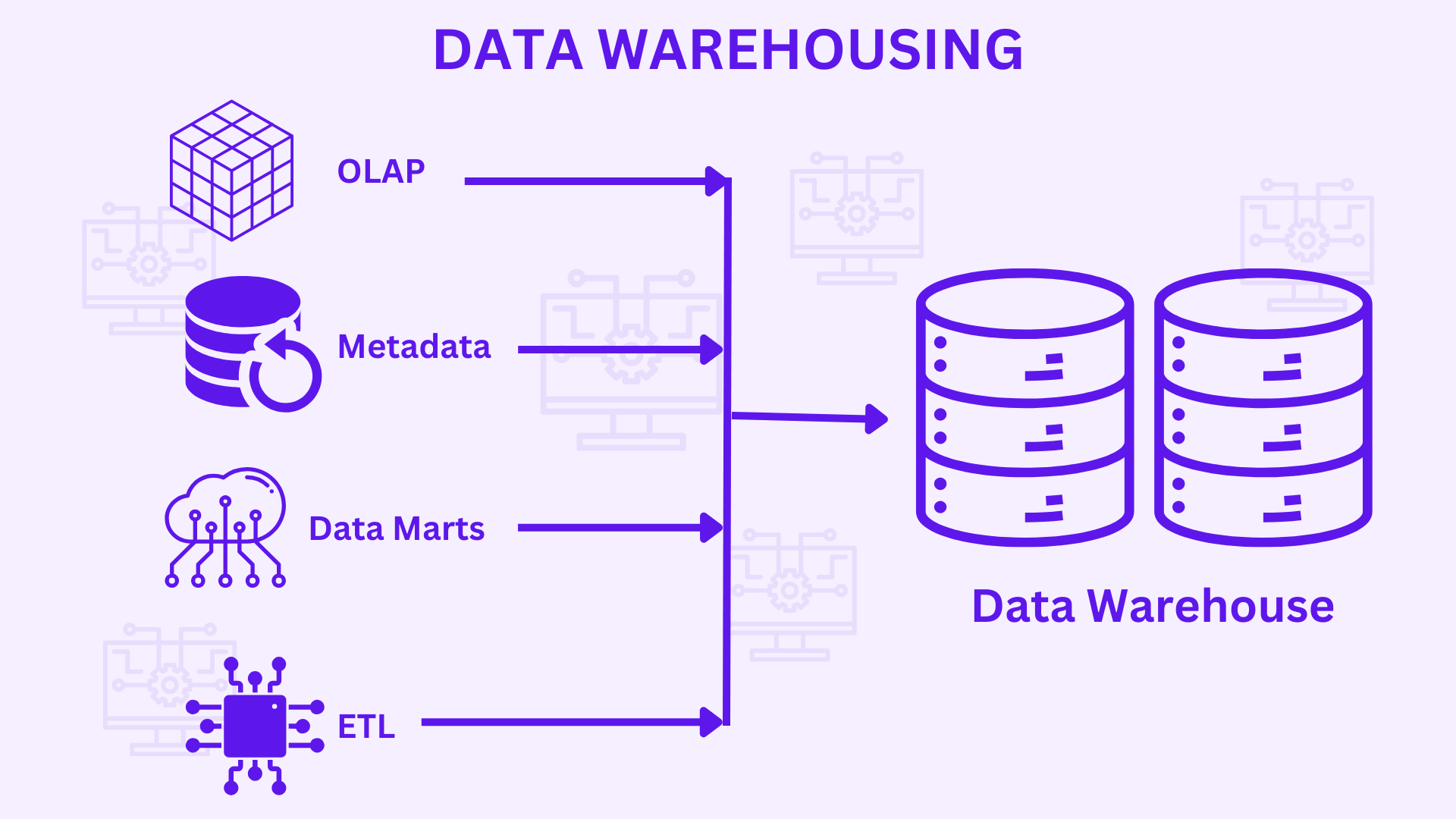Data Warehouses

A data warehouse is a system that is used for data analysis and reporting. It is a central repository for data that has been merged from one or more diverse sources. Data warehouses are used to support BI activities like data mining, online analytical processing (OLAP), and business reporting.
The main characteristics of a data warehouse are:
- It is a centralized repository of data.
- The data is integrated from multiple sources.
- The data is historical and time-series oriented.
- The data is subject-oriented, meaning that it is organized around business entities such as customers, products, and orders.
- The data is summarized and aggregated for analysis.
Examples of data warehouses include:
Customer relationship management (CRM) data warehouses: These warehouses store data about customers, such as their contact information, purchase history, and product preferences.
Supply chain management (SCM) data warehouses: These warehouses store data about suppliers, products, and inventory levels.
Financial data warehouses: These warehouses store data about financial transactions, such as sales, expenses, and profits.
Healthcare data warehouses: These warehouses store data about patients, such as their medical records, billing information, and insurance claims.
Data Warehouse Schemas
Schemas are ways in which data is organized within a database or data warehouse. There are two main types of schema structures, the star schema and the snowflake schema, which will impact the design of your data model:
Star Schema: The star schema is made up of one fact table that can be connected to a number of denormalized dimension tables. It is the most basic and widely used type of schema, and its users benefit from faster query speeds.
Snowflake Schema: While not as extensively used, the snowflake schema is another organisation structure in data warehouses. In this scenario, the fact table is linked to a number of normalised dimension tables, each of which dimension table has child tables. Snowflake schema users benefit from minimal levels of data redundancy. However, this benefit comes at a price of query performance.
Benefits of using Data Warehouses:
- Improved data quality: A data warehouse consolidates data from various sources, including transactional systems, operational databases, and flat files. It then cleans it up, removes duplicates, and standardises information in order to create a single source of truth.
- Quicker business insights: Decision makers’ capacity to define company strategy with certainty is limited by data from various sources. Data warehouses provide for data integration, allowing business users to include all of a company’s data into every business decision.
- Smarter decision-making: A data warehouse facilitates large-scale BI functions such as data mining (the discovery of previously unseen patterns and relationships in data), artificial intelligence, and machine learning—tools that data professionals and business leaders can use to obtain hard evidence for making smarter decisions in virtually every area of the organisation, from business processes to financial management and inventory management.
- Gaining and maintaining a competitive advantage: All of the aforementioned factors work together to assist an organisation in discovering more opportunities in data faster than is achievable with disjointed data stores.
